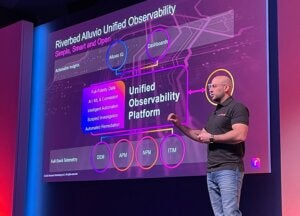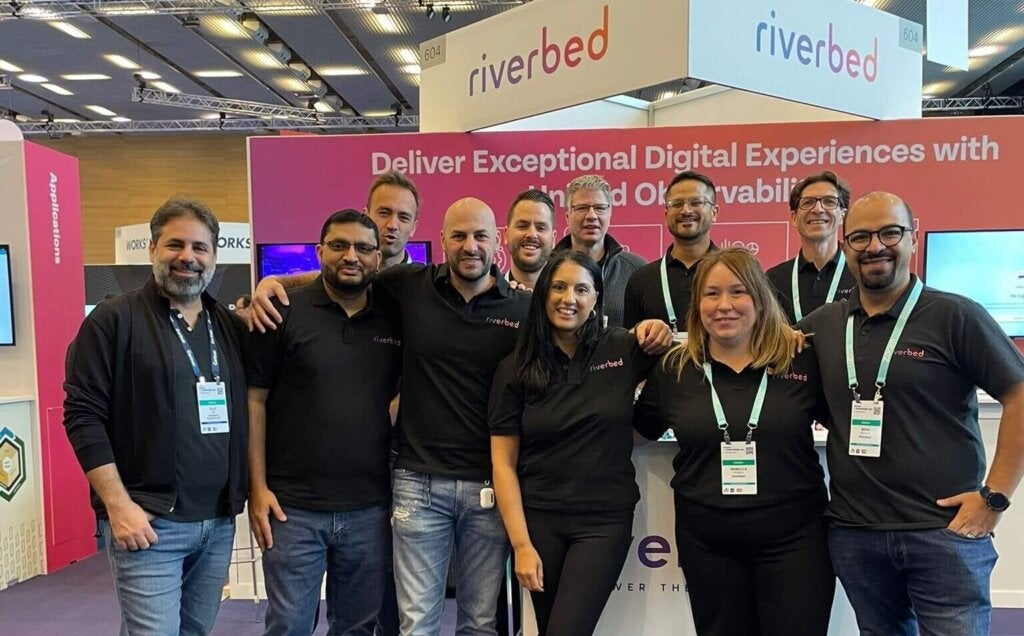
VP Solutions Engineering, EMEA, shares Riverbed’s Unified Observability solutions at Gartner IT Symposium
It’s hardly news that AI is the hottest trend in the tech world. Most of us have dabbled with ChatGPT, become a designer for the day using Midjourney, or taken advantage of the many applications we hardly even consider artificial intelligence–from unlocking our phone with our face to performing a smart Google search.
But having just attended and exhibited at the Gartner IT Symposium in Barcelona, where there was a huge gathering of CIOs and IT executives, it’s clear that AI is revolutionizing the digital sphere in more ways than we could have imagined. And with that comes new opportunities and new risks. Here are some of the things we discovered about AI at the event.
AI is changing the game, and our everyday
If you’re familiar with Gartner, you’ll know about their Hype Cycle methodology. As it says on the Gartner website, ‘clients use Hype Cycles to get educated about the promise of an emerging technology within the context of their industry and individual appetite for risk.’ Gartner has curated several Hype Cycle iterations around AI, including generative AI: the technology that powers the likes of the aforementioned ChatGPT.
The organization’s research has shown four primary use cases for AI:
- Everyday Internal use in a company’s back office
- Everyday External use in the front office
- Game-changing External use, helping businesses become more forward-looking via innovative products and services
- Game-changing Internal use, supporting arduous regular activities and boosting core capabilities.
According to Gartner, it’s critical that companies start considering where they want to be as an organization–and, therefore, where they’d like to use AI. Because when you know the use case, or use cases, that would align with your business’s future strategy and goals, you can apply the technology more effectively and gain the biggest return on your investment.
At Riverbed, we use AI in our unified observability solutions across all four use cases. We provide our partners with scripted automation and proactive issue detection and remediation, both internally and externally, so they can have greater control and productivity in their everyday. And we offer customer and employee journey analysis, looking at behaviors and trends to drive innovation–including product releases–so they can change the game in their industry.
AI works best when you’re open
As well as AI, digital experience management (DEM) was named one of the top five areas organizations should be focusing on – and an area that AI can help accelerate and enhance. We’re an expert in this field, and as we’ve already touched upon, unified observability solutions like ours can empower companies to better understand their employees and customers, improving their experiences using data-driven insight instead of guesswork. But did you know Riverbed’s platforms are open, seamlessly integrating with any IT setup and infrastructure to complement and enhance–not replace–third-party tools a business has already deployed? Attendees who came to our stand at the Gartner Symposium were particularly impressed with this.
One visitor commented, “I’m procuring an APM solution right now. When I found out you could integrate with it, I felt relief that my decision won’t impact the results I can achieve with Riverbed.” Another added, “Riverbed can help me capitalize on and protect my investments, which is important to me and my business.” For us, offering an Open Suite means being able to leverage open APIs to collect or feed data and telemetry from/to third-party tools. This is achieved through the adept use of AI and ML capabilities, resulting in actionable insights. By integrating emerging technologies and tools, we provide our clients with the reliability, resilience, remediation, and more necessary to deliver exceptional experiences to their customers.
AI is creating regulatory conundrums
Imagine a world where you can open a bank account, claim benefits, secure a new job, or access healthcare at the swipe of a screen. Or how about a future where you go to buy an item of clothing online, and the company already knows all your measurements, so every garment you purchase is crafted to be a perfect fit? While this may sound futuristic, fun, and functional–removing the prospect of the tedious returns process–it’s terrifying to consider how much data would need to be gathered, stored, and shared about you for this to happen.
For this reason, the government will need to play a major role in operational excellence, citizen engagement, and driving outcomes. The government will need to regulate the use of AI and will have to play major roles in Identity Use Cases: Identity for Compliance, Identity for Personalization, Identity for Fraud Detection and more. Double down on some of the use cases, they must facilitate confidentiality and compliance for people to feel confident engaging with these new ways of living and working. To that point, behavioral and customer analytics solutions–like the ones Riverbed can provide will add extreme value in better understanding and benchmarking User Behaviors, Journey, Sentiment and Experience. Ultimately, we’re about to see the birth of a new era of AI data culture and security, and we’re ready for it.
AI is only as good as what it’s given (for now)
While AI is already starting to help us in our daily lives, you only have to give Midjourney or DALL·E 3 a few prompts to see that they’re not foolproof (why do the hands always look so strange?). There are many reasons these models aren’t quite clever enough to outsmart us yet – and one of those is that, for now, the tech is only as intelligent as the information it’s given.
That’s where reinforcement learning through human feedback (RLHF) comes in. The RLHF approach involves creating a machine-learning model and continuing to educate it by asking for human input. This could mean, for example, getting people to score an AI chatbot’s response using various criteria. How funny was the chatbot? How natural sounding? How informative?
The ‘reinforcement learning’ (RL) part means AI agents are trained on reward and punishment mechanisms. So, they’re rewarded for correct moves, punished for wrong ones, and therefore incentivized to hit the mark every single time.
Then, onto the ‘human feedback’ bit. This is where real-life annotators compare various outputs from the AI agent and pick those they prefer–essentially, responses that are closer to the intended goal. By combining the elements of traditional RL and plenty of input from us, AI will evolve, eventually completing tasks with perfect performance.
AI is all about the human-machine relationship
It’s a tale that’s been told in endless sci-fi movies for countless years: humans want to be more like computers, while computers want to be more human. In truth, it’s the relationship between mortal and machine we need to get right so we can both progress. Soon, for example, there’ll be a machine-customer market, where robots can purchase consumables for themselves so they can operate for us to the best of their ability. It’s vital that CIOs own these new relationships, having awareness and influence over AI-ready principles, data, and security.

At Riverbed, we like to keep things interactive–so on our stand at Gartner Symposium, we hosted two games, our own branded Pac-Man game and golf putting. One customer, while playing golf and scoring well, commented that they’d never even been on a ‘green’. They then joked that in the future, they’d likely be able to download software to their brain and learn everything they needed to achieve like this in any new sport.
But was this statement a joke, or could it be an accurate prediction?API If Gartner’s insights are anything to go by, we could be looking at the latter.
To learn more about how Riverbed’s solutions use AI to proactively predict and remedy issues, build useful shortcuts, save companies time and money, and give customers the experiences they’ve come to expect, chat to us today.
